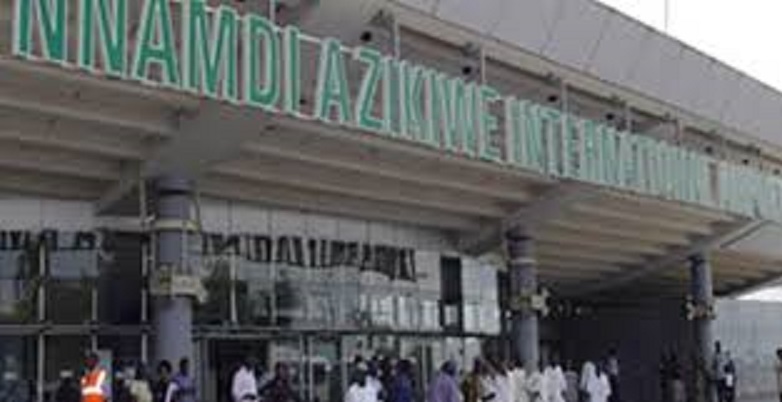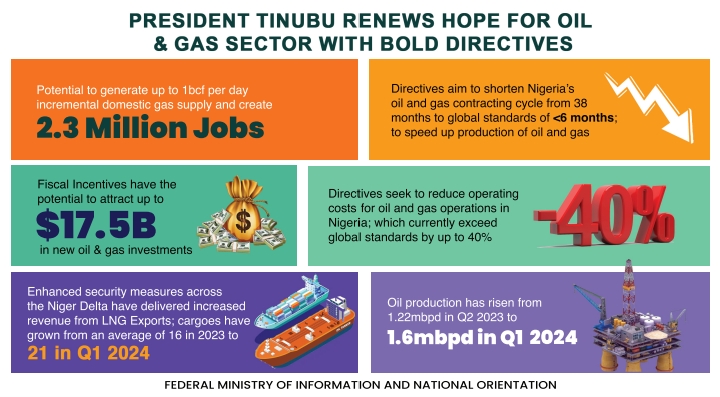Aviation
Missing Malaysia plane: Search shifts to New area

SYDNEY — The hunt for Malaysia Airlines Flight 370 entered a new phase on Thursday as authorities moved the search area for the third time in as many months, focusing on an area of the southern Indian Ocean buffeted by fierce winds and storms.
Authorities conceded the decision to move to an area as much as 600 miles south from where ships and planes have been deployed since early April is based on educated guesswork, given the limited data about the final movements of Flight 370 after it went missing on March 8 with 239 people on board.
The shift comes as private contractors ready plans to take over what would be the largest undersea search mission in history, with a deadline for bids on Monday. Authorities are offering as much as 60 million Australian dollars (US$56 million) for a company or research organization to carry out a search over 20,000 square miles of remote ocean using sonar equipment that may take as long as 300 days to complete.
The Australian Transport Safety Bureau aims to spend about four weeks reviewing the bids before selecting a contractor to lead the rebooted search. That contractor will then have only a month to mobilize crew, equipment and ships from around the world to the new search area ahead of a restart in August.Scientists and aviation experts spent weeks analyzing signals sent from Flight 370 to a telecommunications satellite owned by Inmarsat PLC before concluding the plane likely flew faster than previously thought and turned south out of the Malacca Strait. These experts now think the plane covered a greater distance across the Indian Ocean.
“The only data we have now is the Inmarsat data,” said Charitha Pattiaratchi, head oceanographer at the University of Western Australia in Perth. “There is no physical data, and that’s the issue–you’re in the dark.”
Experts remain confident that the plane crashed within a few miles of a final ping transmission sent to an Inmarsat satellite on the morning of March 8, which they believe represents the moment the plane ran out of fuel. But the plane could have been anywhere along an arc extending thousands of miles of sea when it went down.
Warren Truss, Australia’s deputy prime minister, said it was “highly, highly likely” that Flight 370 was on autopilot when it traveled across the Indian Ocean because of the orderly path it is believed to have taken until it ran out of fuel.Past searches costing tens of millions of dollars have focused on areas along the arc around 700 miles apart, from desolate patches of sea near the French Antarctic territory of Kerguelen, to an area of offshore coral reefs near Exmouth, which is exposed to tropical cyclones. None of these operations, which involved military aircraft and ships from nations including the U.S. and China, found any debris related to the missing plane.
For searchers preparing to renew the hunt for the missing plane, the new area has some advantages. It shifts away from an area that included extremely deep seas such as the Wallaby-Zenith Fracture Zone, a tectonic rip in the Earth’s surface agitated by movements between the Australian and Greater Indian continental plates that descends down to 4.9 miles at its lowest point.
That area would only have been accessible to one device–the Chinese-owned Jiaolong minisub–after another underwater vehicle known as the Nereus imploded off the coast of New Zealand in May, said David Gallo, director of special projects at the Woods Hole Oceanographic Institution.
The new search area runs from the South East Indian Ridge in the south – a narrow area of sea that has been mapped by U.S. researchers in the 1990s – through a deep abyssal plain to just west of the Broken Ridge, which is as shallow as 3,250 feet in places.However, this new area also presents several challenges. It covers a desolate patch of sea close to the “Roaring 40s,” an area lashed year round by fierce winds and storms. Previous air-and-sea search efforts in the remote southern Indian Ocean through late March had to be called off a number of times when waves and gale-force winds became too dangerous, requiring even the 516 foot navy vessel HMAS Success to evacuate the search area.
Two ships have been conducting bathymetric surveys of the sea floor as a precursor to a more detailed undersea search. These maps of the seabed are important because they will help expensive underwater sonar equipment navigate possible ocean trenches and ridges, limiting the chances that they could be damaged or lost.
The Chinese ship Zhu Kezhen has most recently been active in the southern part of the old search area, near where the Haixun 01 picked up acoustic signals with hand-held hydrophones in early April, a person close to the investigation said. Dutch oil and gas company Fugro NV’s bathymetric vessel the Equator was deployed to help speed up the bathymetric survey in mid-June, and sent to an area further south that is in an area indicative of the new search zone, a person close to the investigation said.It isn’t clear how much of this bathymetric work overlapped with the refined search area unveiled Thursday.
Searchers in planes and aboard ships initially focused of an area of the Indian Ocean far to the west of Perth from mid-March, based on preliminary calculations and reinforced by a number of satellite sightings of possible debris. However, objects pulled from the ocean turned out to be floating garbage such as discarded fishing equipment.
Authorities then shifted the search area some 700 miles northeast in late March based on radar analysis. A series of electronic signals detected underwater using a pinger locator towed behind the Australian naval vessel Ocean Shield raised hopes of a breakthrough. However, an underwater search using the Bluefin-21 drone failed to find any trace of the missing plane
– WALLSTREET JOURNAL
Aviation
Accra Bound Aircraft Loses Engine Mid-Air After Departing NAIA, Abuja

An Abuja-Accra flight experienced technical difficulties mid-air on Friday, forcing it to return to Abuja, shortly after departure.
The Nigerian Safety Investigation Board (NSIB) made the disclosure in a statement, adding that it has launched investigation into what it described as a serious accident.
Director, Public Affairs and Family Assistance, NSIB, Bimbo Olawumi Oladeji stated that preliminary investigations revealed the aircraft experienced an engine number two indication issue.
ALSO READ: BREAKING: Kyari Oversees NNPC Ltd’s Transparent Recruitment Aptitude Test
It was gathered that the aircraft, with registration number 5NKAL which was operating a flight from the Nnamdi Azikiwe Airport, Abuja (DNAA), to Kotoka International Airport, Accra (DGAA).
She explained that four persons were onboard when the incident occurred. The crew immediately requested for a diversion back to Abuja due to the engine indication.
Oladeji added that the crew managed to safely land the aircraft at Abuja Airport at 18:16 UTC.
There were no injuries reported, and all individuals on board are safe.
Aviation
FG Secures 12 Pre-Owned Alpha Jets to Bolster Nigeria’s Air Power
Nigeria has acquired 12 pre-owned Alpha Jets from the French Air Force as part of efforts to enhance the operational capacity of the Nigerian Air Force (NAF).
The deal, facilitated through SOFEMA, a French military and aeronautics company, was announced by Olusegun Dada, Special Assistant to President Bola Tinubu on via X on Thursday.
He said, “All the 12 aircraft are ready for shipping.”
The Alpha Jet, a product of Franco-German collaboration, is a versatile military aircraft designed for light attack and advanced training missions.
READ MORE: JUST IN: FG Battles Against Seizure Of Presidential Jets In France
Equipped to carry bombs, rockets, and missiles, the aircraft also features a gun pod for close air support.
The NAF already operates 11 Alpha Jets, but this latest procurement signals a significant boost to its fleet.
Dada also confirmed that the Air Force is expecting 24 M-346FA light attack aircraft, ordered during the administration of former President Muhammadu Buhari.
The first batch of these Italian-made aircraft is expected to arrive early next year.
Air Chief Marshal Hasan Abubakar, the Chief of Air Staff, described the acquisitions as a testament to President Tinubu’s commitment to bolstering the armed forces.
“This renewal of our aircraft fleet reflects the government’s commitment to ensuring the safety and security of Nigerians,” Abubakar said.
The announcement comes on the heels of President Tinubu’s three-day state visit to France, where he met with French President Emmanuel Macron.
The visit, which took place from November 27 to November 30, highlighted deepening ties between the two nations.
To ensure the sustainability of its expanding fleet, the Air Force has proposed establishing a local maintenance hub.
Speaking in October, Abubakar noted that six units of the M-346FA aircraft were already in production, with the initial batch of three expected to be delivered in early 2025. The full fleet is projected to arrive by 2026.
“These developments underscore the importance of creating a domestic support system for the long-term upkeep of our aircraft,” Abubakar added.
Aviation
Festive Season: Aero Contractors Slashes Ticket Prices To N80,000
As the holiday season draws near, Aero Contractors has introduced a minimum ticket price of N80,000 for all local flights.
The move, which will last until January 2024, aims to ease the financial burden on Nigerians amid the high cost of living.
Ado Sanusi, Managing Director of Aero Contractors, made the announcement on Tuesday during a press briefing, describing the fare reduction as a gesture to help Nigerians celebrate Christmas and the New Year without the stress of steep ticket prices.
READ MORE: Bobrisky Defends Egungun of Lagos Amid Viral Video Scandal
Sanusi said, “We understand the economic hardship Nigerians are facing, especially with high ticket prices, and we know the holiday season is nearby.
“In the spirit of Christmas, Aero Contractors has introduced what we call pocket-friendly Christmas prices. These fares, starting at N80,000, will apply to all our destinations, allowing Nigerians to travel without excessive costs.”
As of Tuesday afternoon, an economy class ticket from Lagos to Abuja was priced at N99,643, while business class tickets were being sold for N189,167.
Sanusi further explained that the initiative was designed to make it easier for families to reunite during the holidays.
“This is a way for us, as an organization with a long history of serving Nigerians, to give back to our loyal customers. We want to make it possible for families to meet their loved ones during this festive season without worrying about exorbitant travel costs,” he added.











